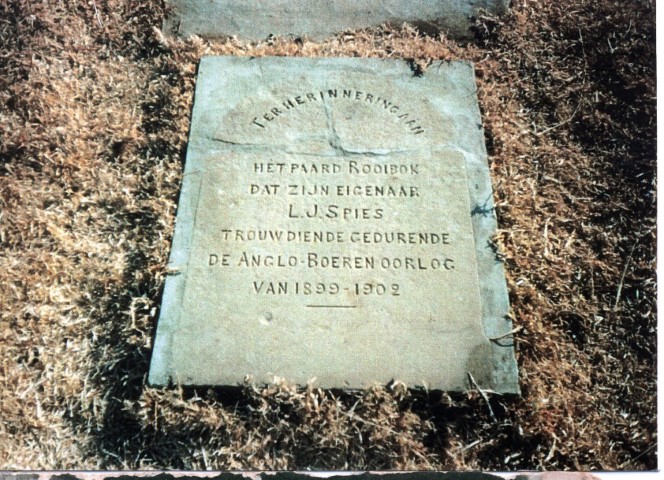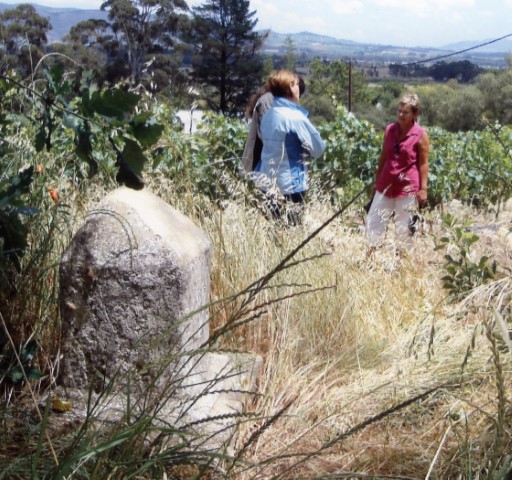Loyal horses of the Anglo Boer War with graves and headstones


Animals were an important part of the logistics for the Anglo Boer War. As there insufficient horses in South Africa thousands were shipped from the British Empire, Europe and America. 360,000 horses out of a total of 519,000, were shipped into South Africa. 106,000 mules and donkeys out of a total of 151,000 were also brought into the country.
The number of horses killed in the war was unprecedented at that time in warfare The average life expectancy of a British horse, from arrival in Port Elizabeth, was about six weeks. There were several reasons: overloading of horses with unnecessary equipment, failure to rest and acclimatise horses after long sea voyages and, later in the war, poor management by inexperienced mounted men and the horses had to be fed as they were unable to forage on the open veld, as the Boer horses could.
During the Siege of Kimberley and Siege of Ladysmith, horses were slaughtered for food. In Ladysmith they produced chevril, by boiling down the horse meat to a jelly paste and serving it like beef tea.
The Boer forces were all mounted and went to war on their own ponies and horses. They were used to conditions on the open veld and the climate in the country, as well as the distances they travelled in a day.
There are a number of memorials in South Africa and other parts of the world commemorating the horses who died during the war – Port Elizabeth South Africa; Winchester England; Barnard's Green, Malvern, Worcestershire, England; Weston KwaZulu-Natal. Although not specific to horses but to the Anglo Boer War itself the following memorials feature horses Canberra, Australia; Ballarat, Australia.
However, there are some unusual stories attached to some of the Boer horses. And these are the ones that fascinate me as each of these individual horses have their own grave and headstone, grave marker or memorial.
Rooibok

At the outbreak of the Anglo Boer War, Lodewyk Johannes Spies from the farm Koppie Alleen, was a member of the Utrecht Commando. He went to war on his faithful horse, Rooibok. Lodewyk saw through the whole war on his horse, which never once left him in the lurch. Rooibok saw service at the battles of Talana, Colenso, Spioenkop and other battles of the guerrilla phase of the war.
He was a seasoned and reliable horse who died on the family farm in 1904. Lodewyk buried the horse on the farm and erected a headstone for him. Lodewyk died in 1962 and is buried about 100m from his horse.
Mapago



The Cape rebel Willie Hugo of the farm “Druk-my-Niet” in Dal Josafat, had a Basotho pony, Mapago, who carried him throughout the Anglo Boer War.
Many stories have been told about this faithful pony who saved his owner’s life and who on one occasion led him back to the commando after Willie had got lost in mist. They fought in the southern Free State under command of Generals de Wet and A.M. Prinsloo.
After the war the horse went back to the farm and when he died of old age and was buried on the farm. Willie Hugo carved a headstone from stone and covered it in white lime.
Villebois
This Boer horse, originally belonged to the French General de Villebois-Mareuil who had offered his services to the Boer forces and was the only foreigner to command a Boer Commando during the Anglo Boer War.
In April 1900 in an engagement between the Boer and British forces, near Boshoff, in the Free State, General de Villebois- Mareuil was wounded and died a short while later and was buried at Magersfontein. His horse was also wounded.
The British commander during this engagement was Maj. Gen.Lord Chesham who felt so bad about the wounded horse that he sent the horse, by ship, back to his family estate in England. Here the horse recuperated and spent the next 11 years of its life, dying in 1911.
His heart and ceremonial trappings are buried on the village green at Latimer, Chiltern Buckinghamshire, England and a cairn to him was erected on the village green, adjacent to the memorial to the 73 men who had died on active service in South Africa.
The inscription on the cairn reads “Villebois. Brought to England by Maj. Gen. Lord Chesham K.C.B. in 1900. Died February 1911.” According to memory and legend the horse was large, black and a swift as the wind.
Anglo Boer War, Animals, Wars and Battles
- Hits: 1031